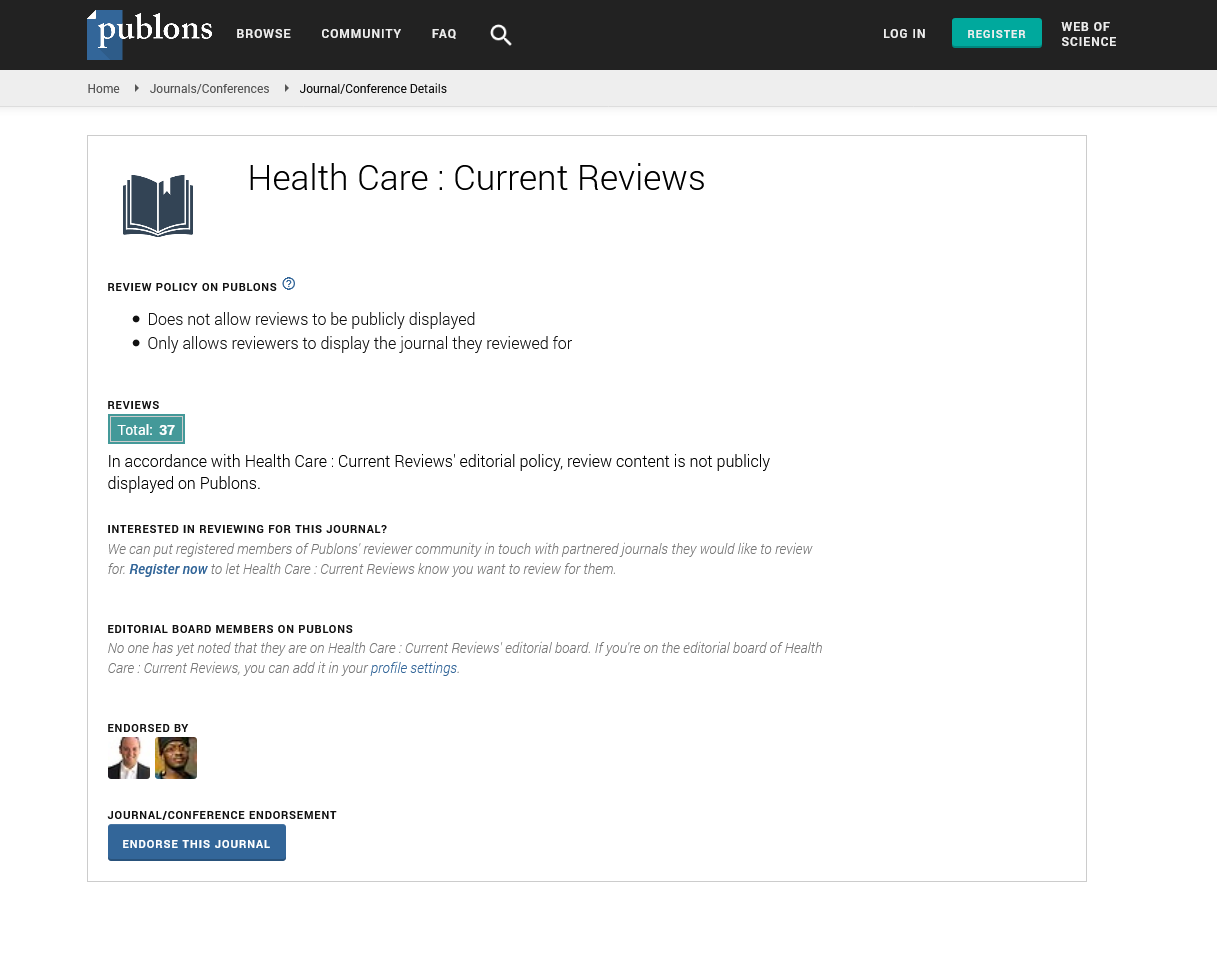PMC/PubMed Indexed Articles
Indexed In
- Open J Gate
- Academic Keys
- RefSeek
- Hamdard University
- EBSCO A-Z
- Publons
- Geneva Foundation for Medical Education and Research
- Google Scholar
Useful Links
Share This Page
Journal Flyer

Open Access Journals
- Agri and Aquaculture
- Biochemistry
- Bioinformatics & Systems Biology
- Business & Management
- Chemistry
- Clinical Sciences
- Engineering
- Food & Nutrition
- General Science
- Genetics & Molecular Biology
- Immunology & Microbiology
- Medical Sciences
- Neuroscience & Psychology
- Nursing & Health Care
- Pharmaceutical Sciences
Epidemiology of patients presenting with gout to large County Hospital, 2016-2018
Joint Meet on 6th World Congress on Public Health and Nutrition & 28th International Congress on Nursing and Primary Health Care & 9th International Conference on Mental health and Human resilience
May 03, 2021 | WEBINAR
John Kiel DO
University of Florida, USA
Posters & Accepted Abstracts: Health Care Current Reviews
Abstract:
Study Objectives: Undifferentiated acute monoarticular joint pain is often seen in the emergency department (ED). In the US, there are approximately 8 million ED visits for gout and 20,000 cases of septic arthritis each year. We aimed to characterize the epidemiological, clinical, and diagnostic findings of patients presenting with a diagnosis of gout or septic arthritis. Methods: This was a single urban center IRB approved, retrospective medical record review of patients >18 years presented for a single ED visit with joint pain between January 2016 and December 2018 with a ICD10 primary diagnosis of gout. We excluded septic arthritis diagnosis due to the small ED sample. Descriptive and summary statistics were performed on all variables. Results: Initially, 22,173 patients with monoarticular joint pain complaints were analyzed, 95 were included. Exclusion: 1,583 patients<18 years or with non-qualifying ICD10 codes, 4,986 had repeated visits, 14,507 did not have gout as primary or secondary diagnosis and 1,002 had gout as a secondary diagnosis. The mean age was 56 years (range 22-101 years) with 77% male and 67% African American. The most common comorbidity was diabetes mellitus (26%). The great toe was the most commonly affected joint (64%). Patients most commonly reported pain (94%) followed by swelling (76%) while on physical exam clinicians most commonly documented tenderness (78%) followed by edema (77%). Less than half of patients received plain radiograph (XR) of the affected joint (46%), of which only (18%) demonstrated radiographic findings of gout. Arthrocentesis was conducted on 10% of cases, of which (78%) had monosodium urate crystals in synovial fluid analysis. Only one patient (1%) was admitted. A non-opioid analgesic was commonly prescribed at discharge (57%) followed by opioids and steroids (9%) each. Conclusions: Gout may present in an atypical fashion to the ED. Only (0.4%) of ED cases of monoarticular joint pain were diagnosed with gout. Gout was often diagnosed and treated based on history and physical examination. Our study suggests a high use of non-opioid and opioid analgesics in gout patients discharged from the ED. Future research should explore the role of history and physical examination compared to objective measures of gout diagnosis in the management of patients presenting with monoarticular joint pain and the role of nonopioid pharmacological strategies for pain relief in gout and educating patients with a higher prevalence of risk factors on opioid alternatives.

